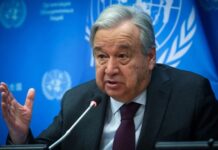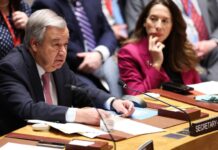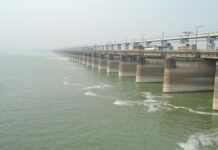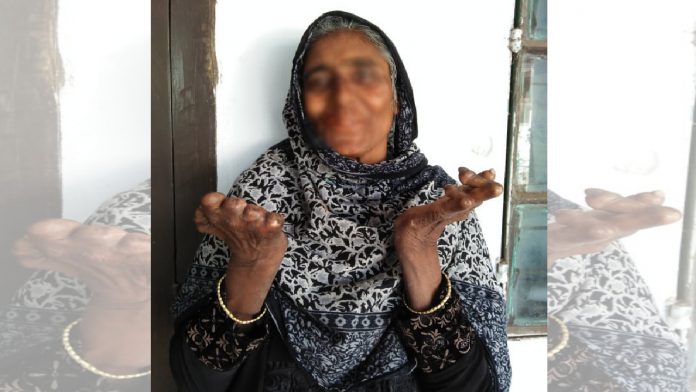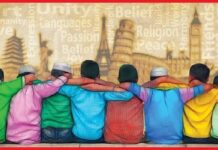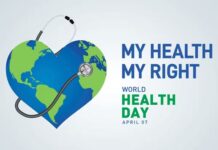World Leprosy Day-2021 observed
Dailynewsun Report, January 31, 2021:
Still about 4000 fresh leprosy cases are being detected every year in Bangladesh and almost eight percent people of them suffer from leprosy-related disability, shows a document from Leprosy & TB Coordinating Committee (LTCC) on ‘World Leprosy Day-2021’.
With a slogan ‘#Beat Leprosy’, the National Leprosy Programme (NLP) and LTCC member organizations jointly celebrating the World Leprosy Day-2021 in Bangladesh as elsewhere in the globe.
The country observes the day with a Bengali slogan ‘Sommilito Procestay, Kushtoke Kori Joy’ reads it is possible to defeat leprosy by concerted efforts.
Addressing the National Conference 2019 on Zero Leprosy Initiative by 2030 in Dhaka in 2019, Prime Minister Sheikh Hasina directed everyone to avoid negative attitudes and stop discriminating leprosy patients and instead take initiative for their proper treatment.
“I believe that we could build a leprosy-free Bangladesh much before the target 2030, if we all work sincerely in this regard,” said the Prime Minister.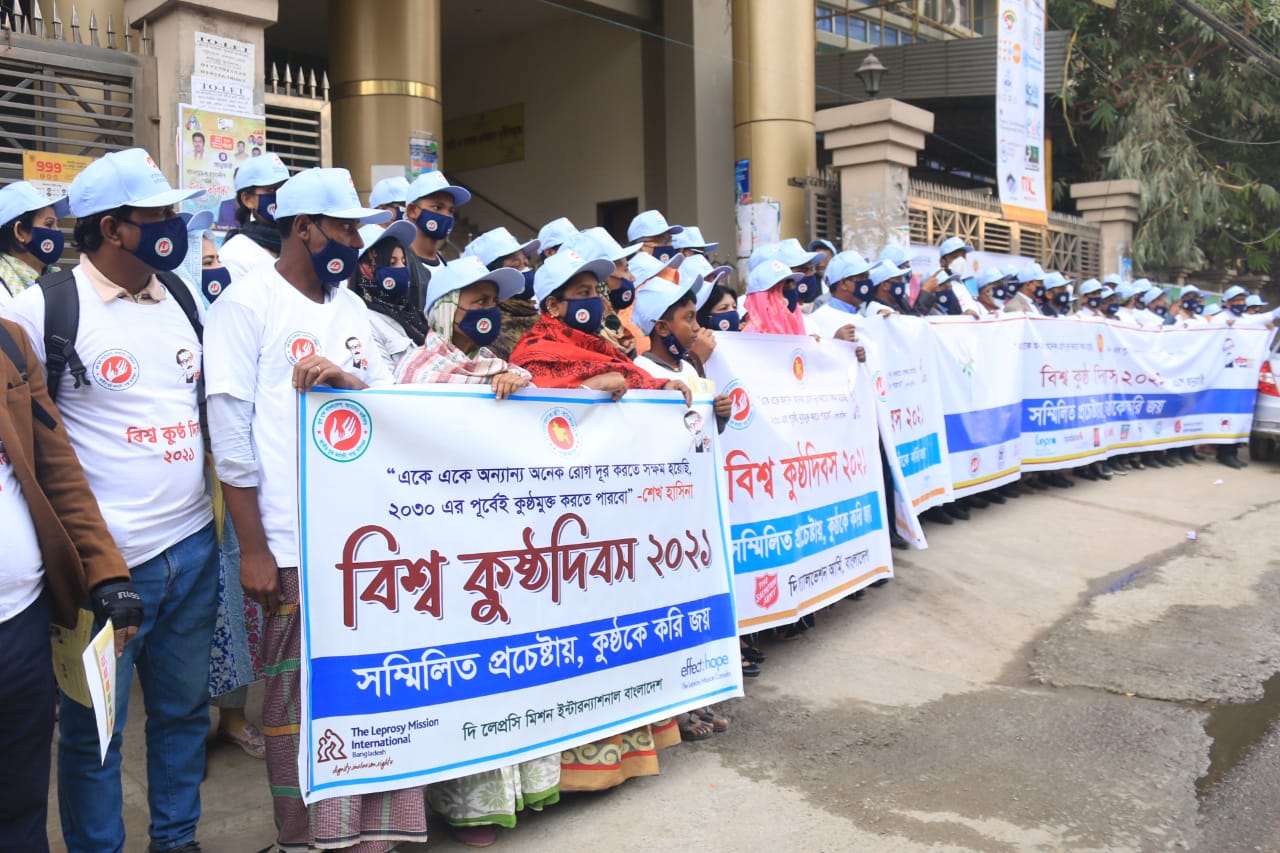
World Leprosy Day-2021 Celebration in Dhaka
In observance of the World Leprosy Day-2021 on Sunday, a standing rally and discussion on leprosy were arranged in the morning on the Directorate General of Health Services (DGHS) premises in Mohakhali.
Dr Md Shamiul Islam, Director, MBDC, & Line Director-TBL & ASP, DGHS, Mohakhali, inaugurated the rally attended by Dr Md Enamul Haque, Deputy Director, MBDC, & Program Manager, NLP; Dr Md Sheikh Abdullah Hadi, former Program Manager, NLP; Mr Solomon Sumon Halder, Country Director, TLMI-B & Chairman LTCC; Dr Adnan Russel, SMO; Dr Naima Haque, SMO, NLP; including officials, staff of National Leprosy Program (NLP), LTCC partners among others.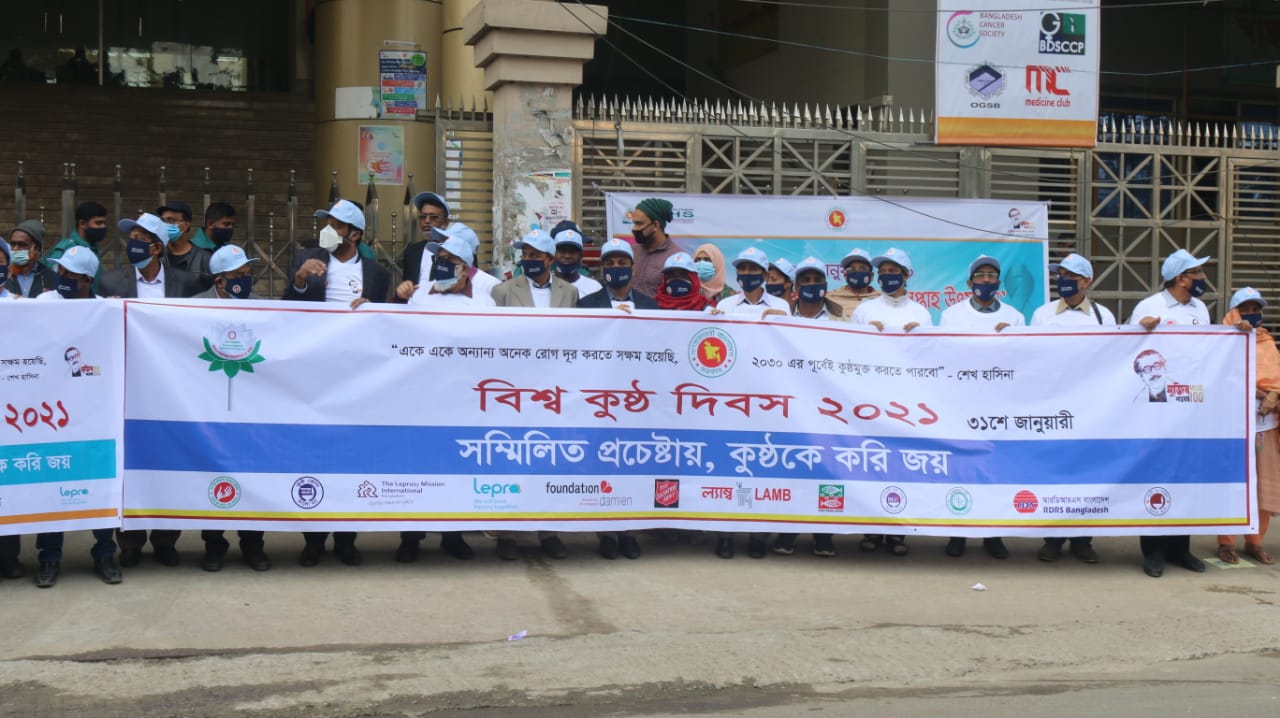
Dr Ay Ka Jay Maung, Convenor, LTCC Steering Committee & Country Director Damien Foundation; Dr David Pahan, Country Director, Lepra Bangladesh; Dr Dipok Kumar Biswas, Medical Coordinator, Damien Foundation, Mr Nikhil Chandra Saha, Finance Director, Heed Bangladesh; Mr Thomas Singh, Project Manager Lepra Bangladesh; Mr Albert Sarkar, Project Manager, Salvation Army; Mr Jiptha Boiragee, Program Support Coordinator, TLMI-B; Masuma Parvin, Project Manager, TLMI-B among others were present in the event.
Posters, banners & leaflets, T-shirts containing texts on leprosy awareness were distributed among the participants.
Besides program in Dhaka, civil surgeons’ offices across the country and leprosy-focused organizations arranged various event celebrating the World Leprosy Day-2021. 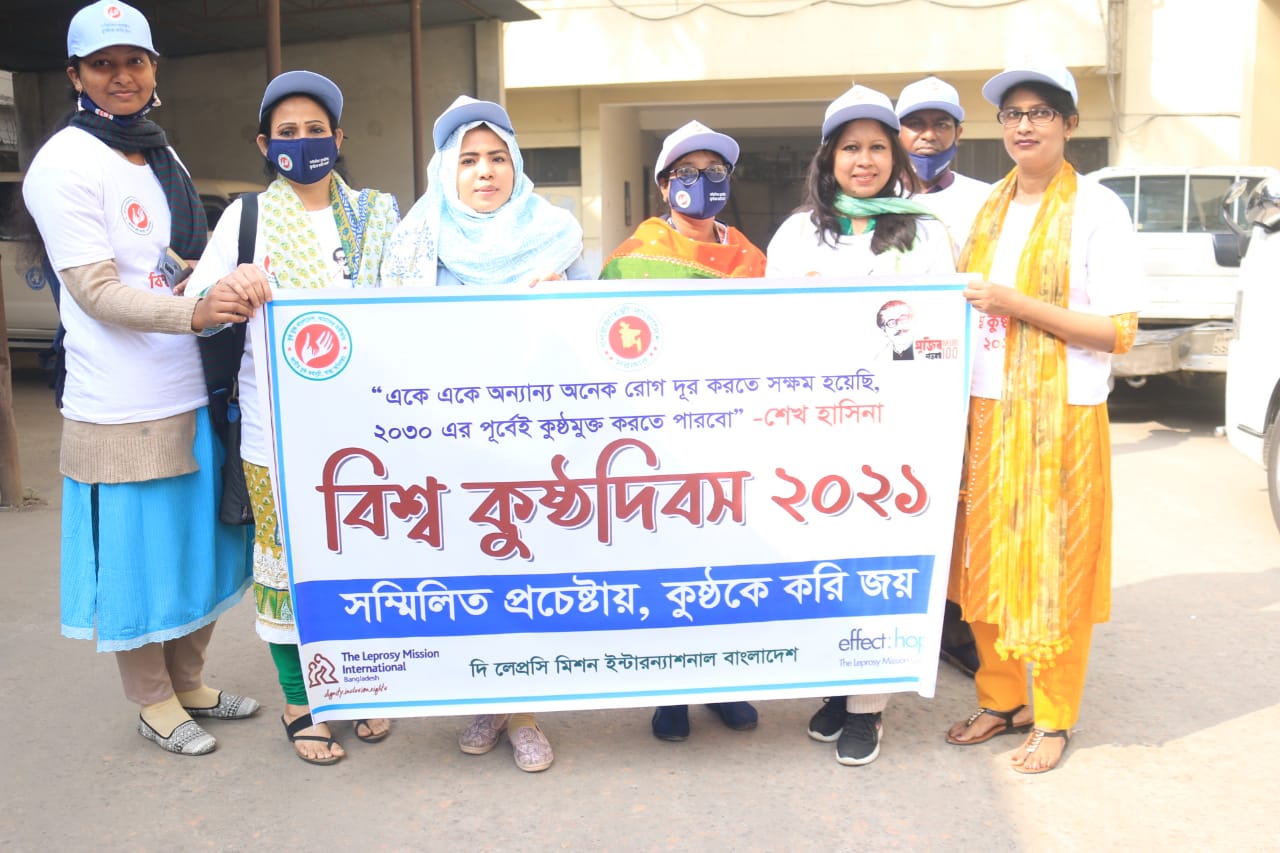
What is leprosy?
According to the World Health Organization (WHO), Leprosy, also known as Hansen’s disease, is a chronic infectious disease caused by Mycobacterium Leprae (a relative of TB).
Leprosy, one of the Neglected Tropical Diseases (NTD), primarily affects the skin, the peripheral nerves, mucosal surfaces of the upper respiratory tract and the eyes.
The first signs of leprosy are patches of skin which look paler than normal or sometimes nodules on the skin. It is known to occur at all ages ranging from early infancy to very old age.
WHO as well as organizations like The Leprosy Mission International provide confirmation that leprosy is curable and treatment in the early stages can prevent disability.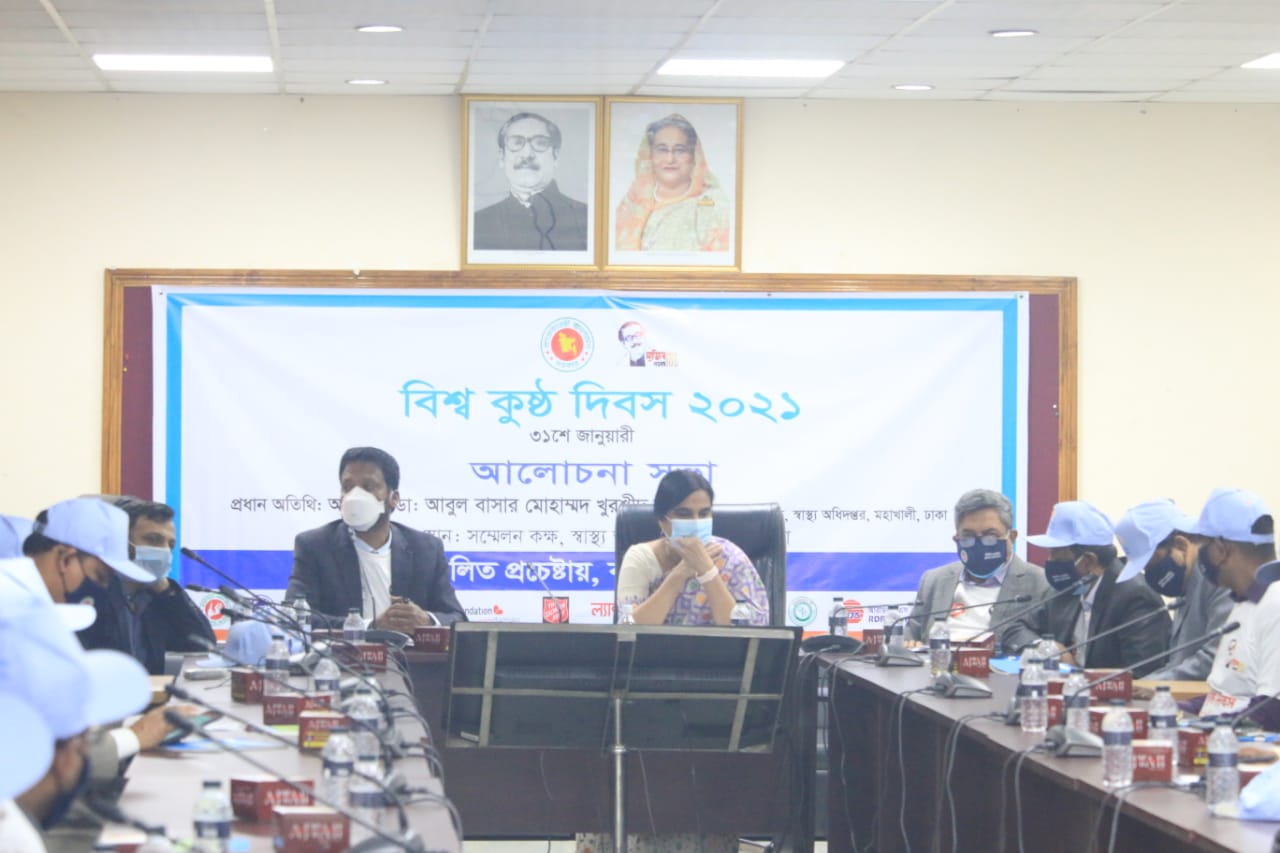
Leprosy in Bangladesh
Bangladesh has achieved the WHO target of reducing the number of leprosy patients to one in 10,000 population in 1998.
Although the that target was achieved two decades earlier, still about 4000 people are being diagnosed as affected by leprosy in Bangladesh.
According to information from NLP, 3754 new people were found as affected by leprosy in 2017, and in 2018 the fresh leprosy case was 3729.
In 2019 a total of 3638 people were brought under treatment as they were found as affected by leprosy while 898 people were found affected by leprosy in the first six months of 2020.
Among the 3638 persons affected by leprosy in 2019, a total of 252 people suffered from leprosy-related disability, NLP data shows.
According to the National Leprosy Program (NLP), altogether 2,26,711 leprosy cases were detected in Bangladesh in between 1985 and 2019 but after receiving MTD treatment 2,18,538 of them recovered during this period.
NLP data shows 26,479 people detected with leprosy-related disability in between 1985 and 2015 in Bangladesh.
Along with leprosy-related complication and disability, persons affected by leprosy in Bangladesh suffer from social stigma, discrimination, and superstitions everywhere which must be removed to make leprosy-free Bangladesh, said health experts.
According to information from World Health Organization (WHO), though the leprosy one of the Neglected Tropical Diseases (NTD) seem to be forgotten, still 600 people are diagnosed with leprosy start medication for recovery.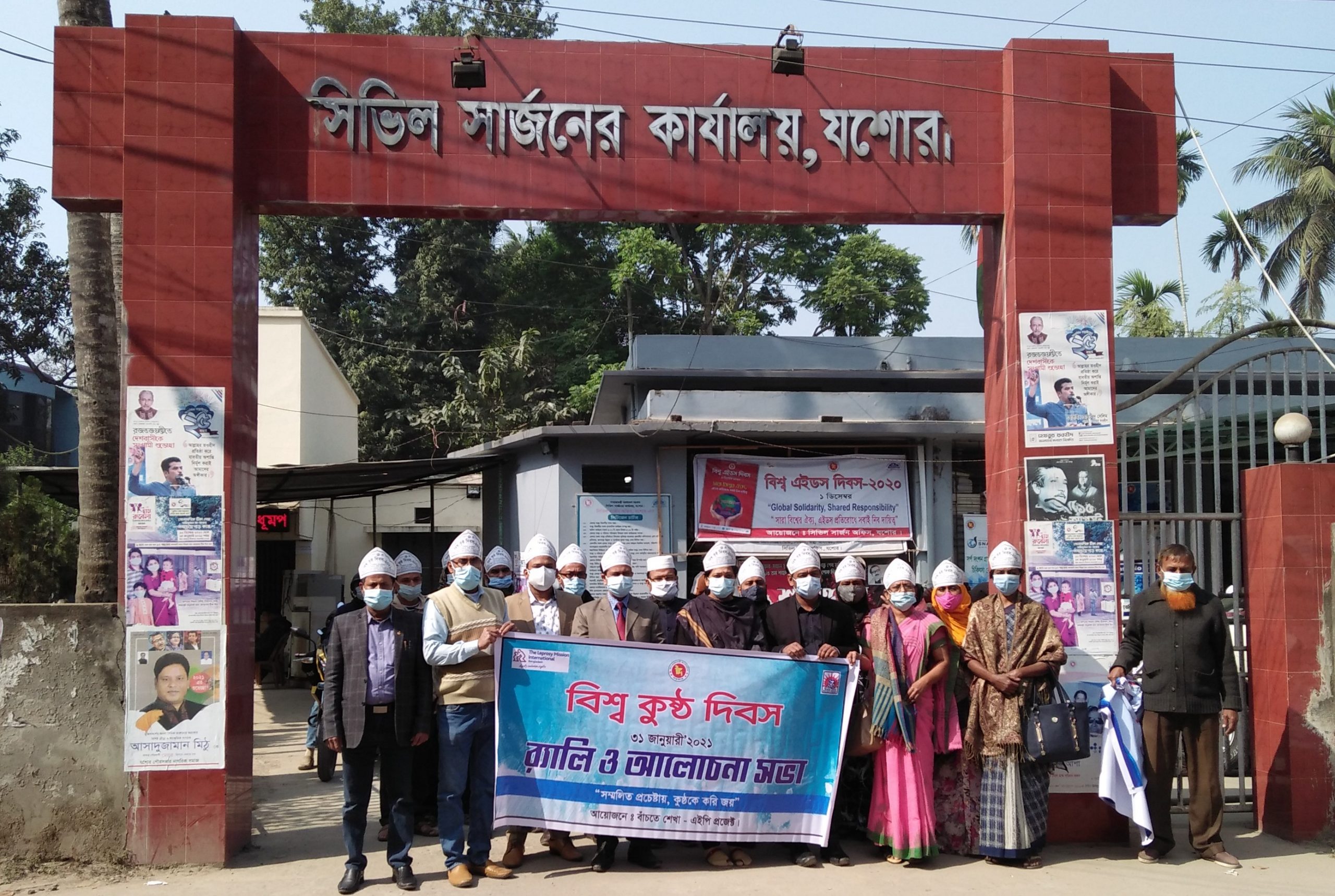
Leprosy in neighboring India
In India, 127,334 new leprosy cases were detected from 2016 to 2017, and 4.6 percent of them had Grade 2 disability at the time of diagnosis.
The World Health Organization (WHO) shows that a total of 20,8619 new leprosy cases were reported in 2018 from 127 countries.
According to the United Nations (UN), “The level of serious disability is alarming and completely unnecessary.”
“Too many people with leprosy remain trapped in a never-ending cycle of discrimination and disability,” it said.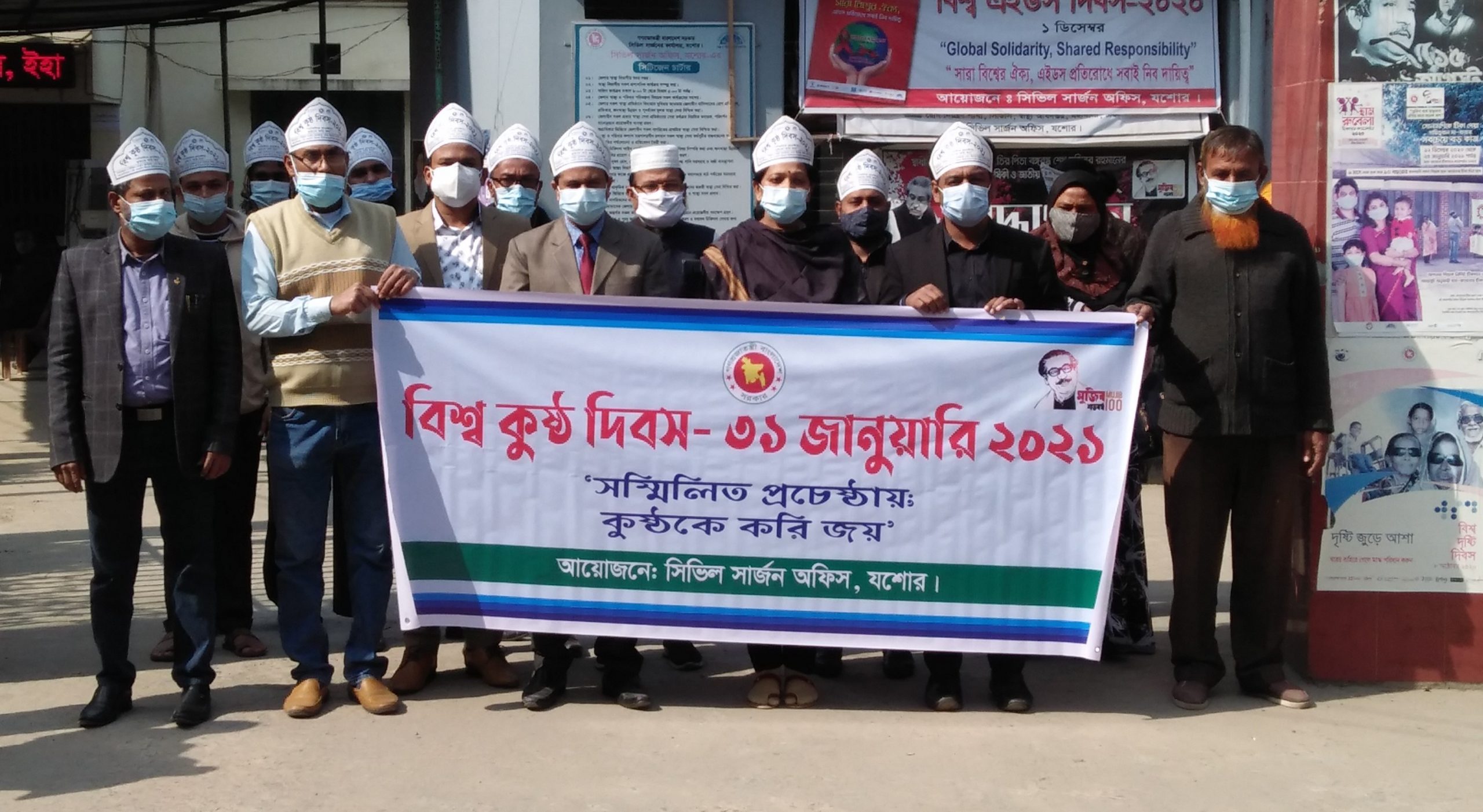
What Do Experts Say?
The Leprosy Mission International Bangladesh (TLMI-B) Programme Support Coordinator Jiptah Boiragee said “To make Bangladesh a leprosy-free nation by 2030, ensuring treatment facilities for persons affected by leprosy in all government hospitals are necessary besides few leprosy-dedicated hospitals.”
It is necessary to provide training to government doctors as they can identify new leprosy case in early-stage, Jiptah added.
TLMI-B AEP Project Manager Masuma Parvin said “Besides the leprosy elimination activities, it is necessary to raise awareness against leprosy-related social stigma, superstitions and misconceptions in the society.”
Prime Minister’s Pledge to Make Bangladesh a Leprosy-Free Nation
Addressing the National Conference 2019 on Zero Leprosy Initiative by 2030 in Dhaka in 2019, Prime Minister Sheikh Hasina urged everyone to avoid negative attitudes and stop discriminating leprosy patients and instead take initiative for their proper treatment.
She said “We have to discard the mentality that if anyone is affected by leprosy, the person should be sacked or isolated from the society.”
Bangladesh’s Prime Minister said leprosy patients would get cured to a large extent if all of the society shoulders responsibility to ensure their rights to coexist in society.
“I believe that we could build a leprosy-free Bangladesh much before the target 2030, if we all work sincerely in this regard,” she added.
Urging local pharmaceutical companies to produce medicines for leprosy, PM Sheikh Hasina said “Many of our pharmaceutical companies are exporting their products to various countries. Our medicines are of very good quality. I would like to tell them that if they produce special medicines needed for leprosy patients and take measures to distribute them for free, we will reach our target (Zero Leprosy) very quickly.”


